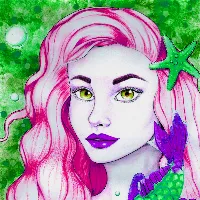~photo by me~
~photo by me~
where:
- https://steemitimages.com/DQmSa6ARHRRez5fjeHMWx1YjzWcfKcufMEWty2xvHrr9igW/image.png can be calcium, sodium, potassium, or (□) vacant
- https://steemitimages.com/DQmPqYeabRS32ujbMgKHRXVRWW6dQZTQz8bZUJ5nVQLF8po/image.png can be lithium, magnesium, iron2+, iron3+, manganese2+, zinc, aluminum, chromium3+, vanadium3+, titanium4+, or (□) vacant
- https://steemitimages.com/DQmRhyngqBAYm13XKiiH5ufBrYgKJvpvWnD8RGVDbtEgLej/image.png can be magnesium, aluminum, iron3+, chromium3+, vanadium3+
- https://steemitimages.com/DQmcAb1HiCra8Cx9psWDu5C3e8J1yY4gqPoZk4XXZLJsEbF/image.png can be silicon, aluminum, or boron
- https://steemitimages.com/DQmeHBvrFT1VhtF2KKba6dKsvFYVGKYM5zbvWtEQkggbVrS/image.png can be a hydroxide ion, or oxygen
- https://steemitimages.com/DQmdWDTmuLVTKyTC69XeZH6ovSwDsf2TwKuCMRALNvHf9W2/image.png can be a hydroxide ion, fluorine, or oxygen
Different permuations can yield crystals of different colors, and some of those permutations are common-enough to have names of their own. For example, a tourmaline crystal that has the chemical permutation NaMg3Al6Si6O18(BO3)3(OH)3OH is typically brown in color and is called "Dravite," whereas a tourmaline crystal that is composed of □(LiAl2)Al6Si6O18(BO3)3(OH)3OH [where '□' indicates a vacancy in the 'X' position] is pink to light-tan in color and is called "Rossmanite." The most common tourmaline is the one called "Schorl" with a chemical formula NaFe2+3Al6Si6O18(BO3)3(OH)3OH that makes it black in color.
SOURCES 2 Wikipedia: "Tourmaline" 1 Minerals.net: "The Gemstone Tourmaline" 2 Geology.com: Tourmaline: Earth’s most colorful mineral and gemstone
Zoisite • Rutilated Quartz • Garnet • Amazonite Sphere
Lapis Lazuli Mala • Amethyst Point • How Rocks Get Their Color
Red Jasper • Ring, Ring! Amethyst Calling! • Lapis Lazuli • Turitella Agate
Return from Tourmaline to 𝕜𝕚𝕥𝕥𝕪's Web3 Blog






